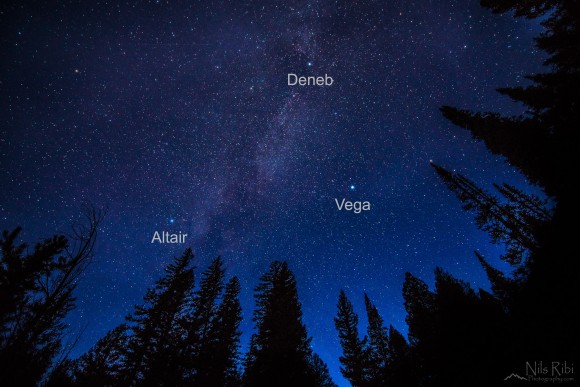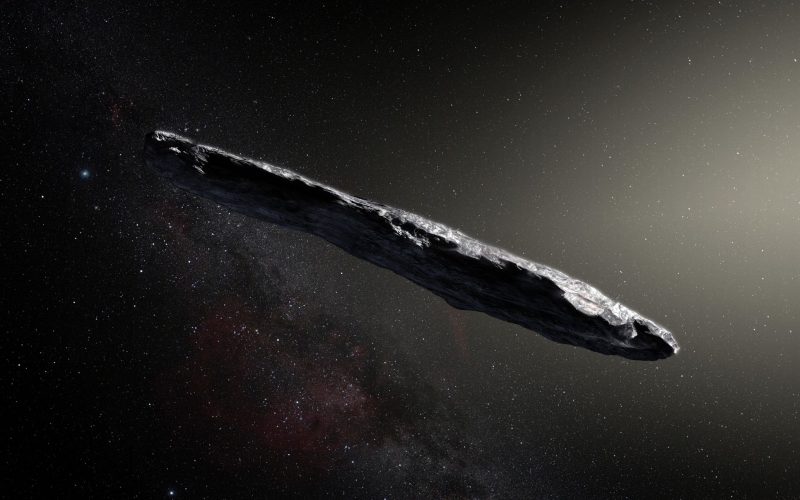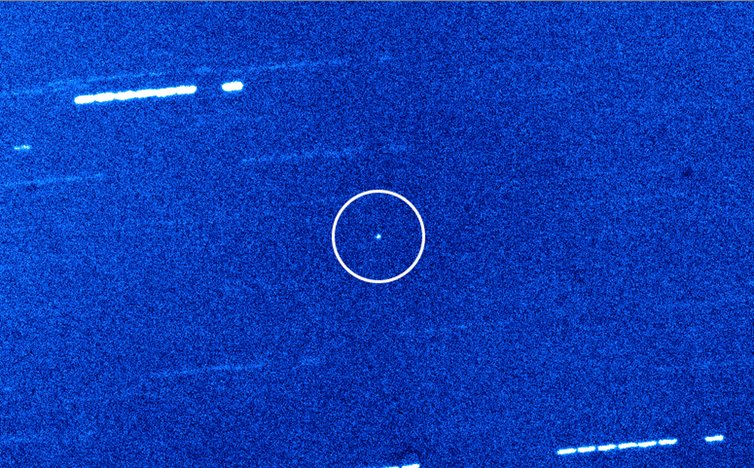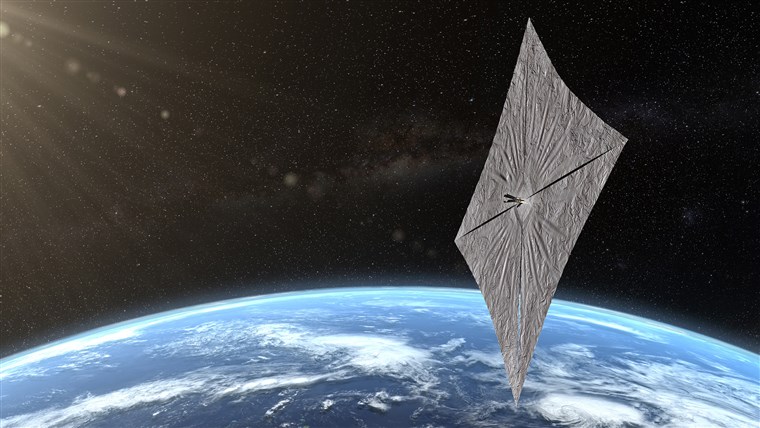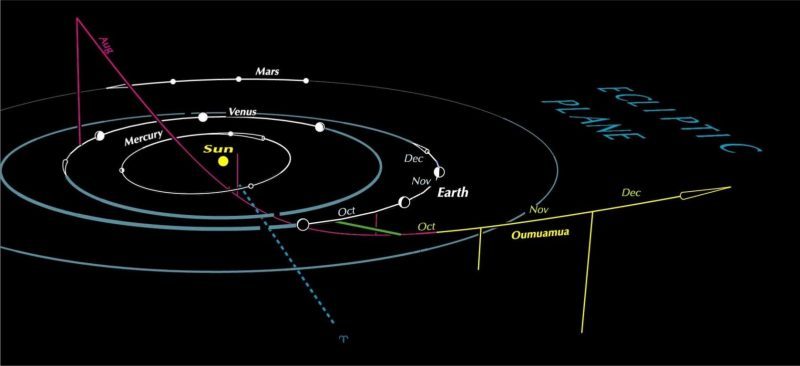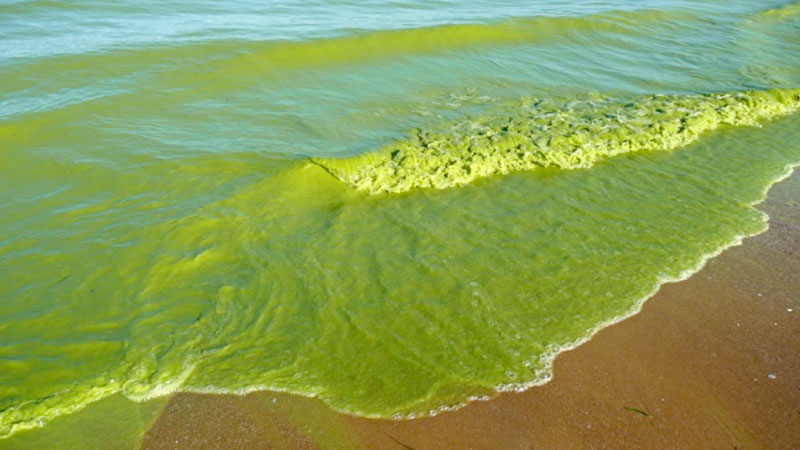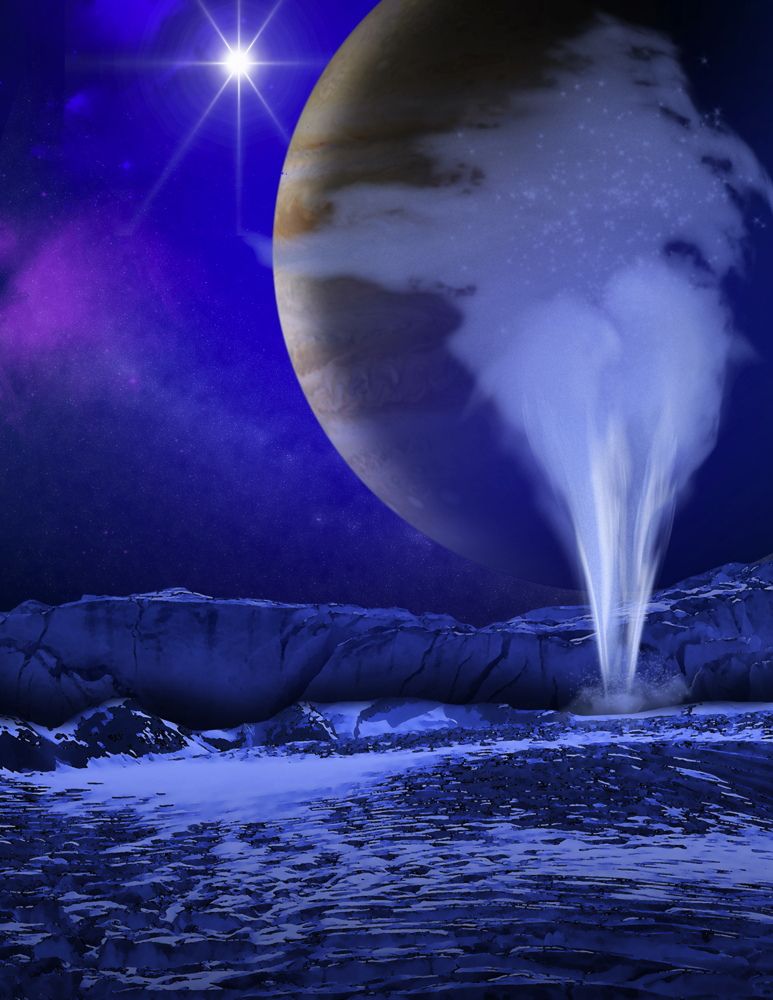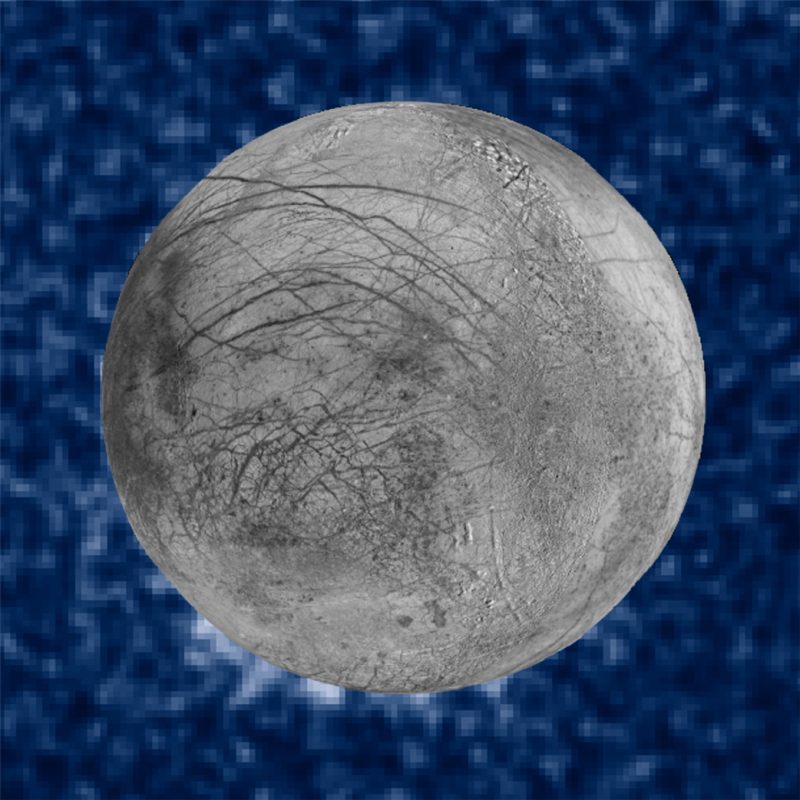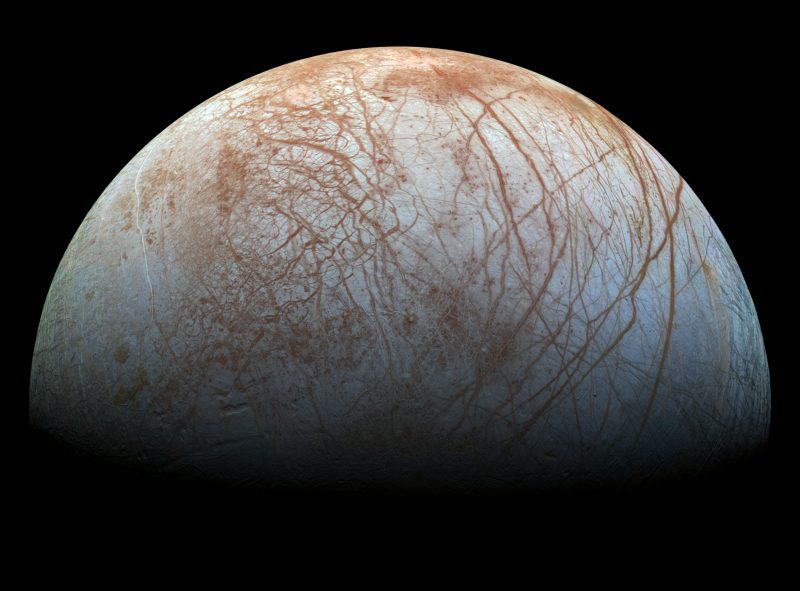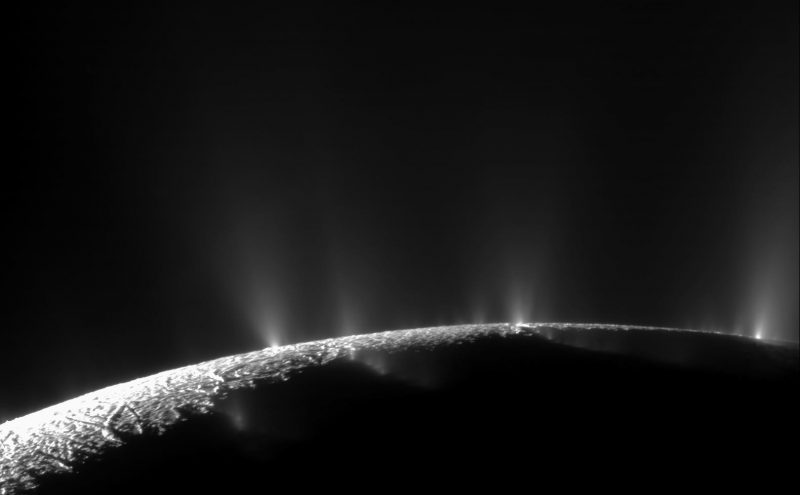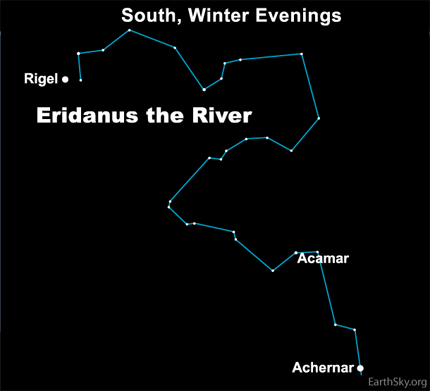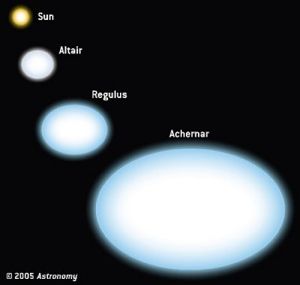
Mercury, the innermost planet, reaches its greatest elongation from the sun on November 28, 2019. In other words, that date marks Mercury’s farthest point from the sunrise on the sky’s dome for this morning apparition. Mercury will be 20 degrees west of the sun. You’ll find it at dawn, more or less on line with the red planet Mars and the bright blue-white star Spica in the constellation Virgo.
Mercury is easier to see from the Northern Hemisphere at this morning apparition than in the Southern Hemisphere. In short, the farther north you live, the more time that Mercury spends above the horizon before sunrise; and the farther south you live, the closer that Mercury rises to sunrise. At mid-northern latitudes, Mercury rises about 1 3/4 hours before the sun.
As seen from temperate latitudes in the Southern Hemisphere, Mercury comes up less than an hour before sunrise. Chances are that both Spica and Mars will fade from view by the time that Mercury rises. From temperate latitudes in the Southern Hemisphere, you may need binoculars to spot Mercury before sunrise.
At present, Mercury shines about three times more brilliantly than a 1st-magnitude star. By late November, it’ll be shining some four times brighter. Don’t know how bright a 1st-magnitude star is? No problem. Blue-white Spica, which lights up the predawn darkness, provides a prime example of a 1st-magnitude star in the early morning sky right now.
The red planet Mars, which is also up before dawn’s first light, is found below Spica and above Mercury. However, Mars is about half as bright as Spica, and may fade from view by the time that Mercury rises. If you’re up before dawn, Mercury may have yet to rise. Keep in mind, though, that an imaginary line drawn from Spica through Mars pretty much points to Mercury’s rising point on the horizon.
For your specific view of Mercury, Mars and Spica on various dates, try Stellarium online
EarthSky 2020 lunar calendars are available! They make great gifts. Order now. Going fast!

View at EarthSky Community Photos. | Karl Diefenderfer was in Doylestown, Pennsylvania on Monday morning, November 25, 2019 when he caught the very old moon and Mercury. Thanks, Karl!
From northerly latitudes, Mercury will remain in fine view into the first week or two of December. Watch for this world near the sunrise point on the horizon as the predawn darkness begins to give way to dawn. We give the approximate rising time for Mercury – for around late November/early December – at various latitudes (given a level horizon):
60 degrees north latitude
Mercury rises more than 2 hours before the sun40 degrees north latitude
Mercury rises 1 2/3 hours before the sunEquator (0 degrees latitude)
Mercury rises 1 1/3 hours before the sun35 degrees south latitude
Mercury rises less than 1 hour before the sunWant more specific information? Click here for a recommended almanac

The planet Mars and Zubenelgenubi – the alpha star of Libra the Scales – shine near each other in the predawn sky by early December, but may fade from view by the time that Mercury rises. Look for Mars very close to Zubenelgenubi on December 12, 2019.
How should you look for Mercury? After all, it’s often called the most elusive planet – not because it’s faint – but because it’s always near the sun in the sky, generally only visible in twilight. First and foremost, find an unobstructed horizon in the direction of sunrise. At mid-northern and far-northern latitudes, you may well see the celestial line-up – Spica, Mars and Mercury – in the darkness before daybreak.
Your best bet for spotting Mercury, the innermost planet, is to get up before dawn’s first light, or the beginning of astronomical twilight. Extending the Spica-Mars line to the horizon shows you (more or less) where Mercury will rise into your sky, as the predawn darkness gives way to morning twilight.
Visit Sunrise Sunset Calendars to find out when astronomical twilight comes to your sky, remembering to check the astronomical twilight box.
Bottom line: Mercury’s greatest elongation is November 28, 2019, but don’t let that stop you from looking for the planet for some mornings to come. Look east before sunup. Mercury will be on a line with the bright star Spica and red planet Mars. If you’re in the Southern Hemisphere, the view is tougher to catch; bring along binoculars. Catch Mercury now because – for all of us – this world will become lost in the glare of sunrise before 2019 ends.
from EarthSky https://ift.tt/2scRV2G

Mercury, the innermost planet, reaches its greatest elongation from the sun on November 28, 2019. In other words, that date marks Mercury’s farthest point from the sunrise on the sky’s dome for this morning apparition. Mercury will be 20 degrees west of the sun. You’ll find it at dawn, more or less on line with the red planet Mars and the bright blue-white star Spica in the constellation Virgo.
Mercury is easier to see from the Northern Hemisphere at this morning apparition than in the Southern Hemisphere. In short, the farther north you live, the more time that Mercury spends above the horizon before sunrise; and the farther south you live, the closer that Mercury rises to sunrise. At mid-northern latitudes, Mercury rises about 1 3/4 hours before the sun.
As seen from temperate latitudes in the Southern Hemisphere, Mercury comes up less than an hour before sunrise. Chances are that both Spica and Mars will fade from view by the time that Mercury rises. From temperate latitudes in the Southern Hemisphere, you may need binoculars to spot Mercury before sunrise.
At present, Mercury shines about three times more brilliantly than a 1st-magnitude star. By late November, it’ll be shining some four times brighter. Don’t know how bright a 1st-magnitude star is? No problem. Blue-white Spica, which lights up the predawn darkness, provides a prime example of a 1st-magnitude star in the early morning sky right now.
The red planet Mars, which is also up before dawn’s first light, is found below Spica and above Mercury. However, Mars is about half as bright as Spica, and may fade from view by the time that Mercury rises. If you’re up before dawn, Mercury may have yet to rise. Keep in mind, though, that an imaginary line drawn from Spica through Mars pretty much points to Mercury’s rising point on the horizon.
For your specific view of Mercury, Mars and Spica on various dates, try Stellarium online
EarthSky 2020 lunar calendars are available! They make great gifts. Order now. Going fast!

View at EarthSky Community Photos. | Karl Diefenderfer was in Doylestown, Pennsylvania on Monday morning, November 25, 2019 when he caught the very old moon and Mercury. Thanks, Karl!
From northerly latitudes, Mercury will remain in fine view into the first week or two of December. Watch for this world near the sunrise point on the horizon as the predawn darkness begins to give way to dawn. We give the approximate rising time for Mercury – for around late November/early December – at various latitudes (given a level horizon):
60 degrees north latitude
Mercury rises more than 2 hours before the sun40 degrees north latitude
Mercury rises 1 2/3 hours before the sunEquator (0 degrees latitude)
Mercury rises 1 1/3 hours before the sun35 degrees south latitude
Mercury rises less than 1 hour before the sunWant more specific information? Click here for a recommended almanac

The planet Mars and Zubenelgenubi – the alpha star of Libra the Scales – shine near each other in the predawn sky by early December, but may fade from view by the time that Mercury rises. Look for Mars very close to Zubenelgenubi on December 12, 2019.
How should you look for Mercury? After all, it’s often called the most elusive planet – not because it’s faint – but because it’s always near the sun in the sky, generally only visible in twilight. First and foremost, find an unobstructed horizon in the direction of sunrise. At mid-northern and far-northern latitudes, you may well see the celestial line-up – Spica, Mars and Mercury – in the darkness before daybreak.
Your best bet for spotting Mercury, the innermost planet, is to get up before dawn’s first light, or the beginning of astronomical twilight. Extending the Spica-Mars line to the horizon shows you (more or less) where Mercury will rise into your sky, as the predawn darkness gives way to morning twilight.
Visit Sunrise Sunset Calendars to find out when astronomical twilight comes to your sky, remembering to check the astronomical twilight box.
Bottom line: Mercury’s greatest elongation is November 28, 2019, but don’t let that stop you from looking for the planet for some mornings to come. Look east before sunup. Mercury will be on a line with the bright star Spica and red planet Mars. If you’re in the Southern Hemisphere, the view is tougher to catch; bring along binoculars. Catch Mercury now because – for all of us – this world will become lost in the glare of sunrise before 2019 ends.
from EarthSky https://ift.tt/2scRV2G


